 How to Choose the Perfect Tiles for Your Bathroom
How to Choose the Perfect Tiles for Your Bathroom
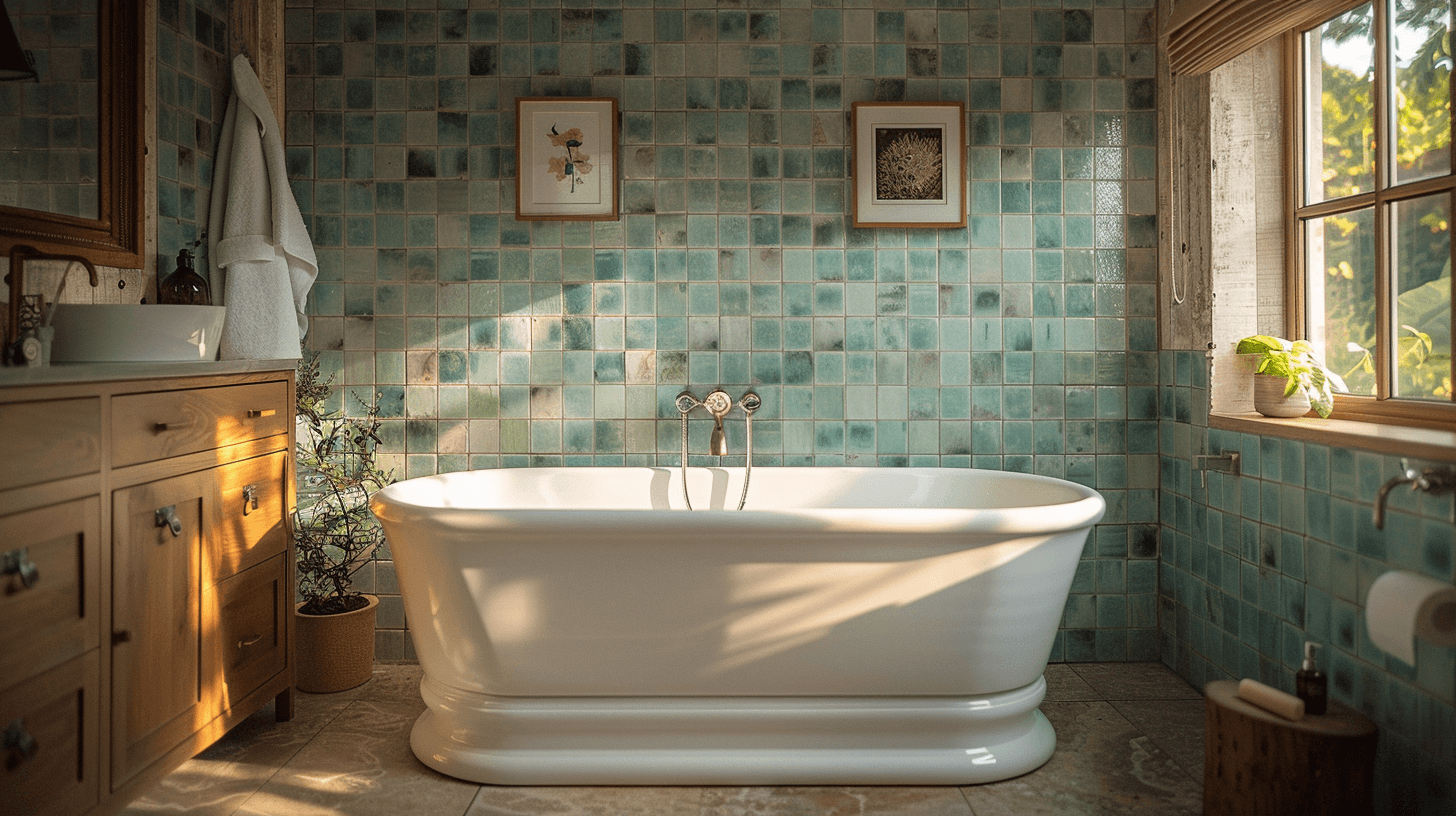
Assessing Your Bathroom’s Requirements
When embarking on the journey to select the perfect tiles for your bathroom, understanding the interplay between bathroom size, lighting, material suitability, and aesthetic intentions is paramount.
Influence of Bathroom Size on Tile Choice
The dimensions of your bathroom directly influence tile selection. Large tiles can create a seamless look and give the illusion of a more expansive space, particularly beneficial in smaller bathrooms. Conversely, smaller tiles may be more suitable for larger bathrooms or for creating intricate patterns and designs.
The Role of Lighting in Tile Selection
Lighting plays a crucial role in how tile colour and finish are perceived. Light-reflective surfaces, such as glossy tiles, can brighten a bathroom and make it appear larger. Matte finishes, on the other hand, can provide a more subtle and even tone under various lighting conditions.
Choosing Tile Materials for High-Moisture Areas
In high-moisture environments like bathrooms, selecting the right tile material is crucial for longevity and safety. Porcelain and glazed ceramic tiles are highly water-resistant and durable, making them ideal choices. Natural stone tiles, while beautiful, may require more maintenance to preserve their water-resistant properties.
Aesthetic Influence on Tile Selection
Your intended aesthetic will guide the texture, pattern, and colour of the tiles. For a minimalist look, consider neutral colours and simple patterns. If you’re aiming for a statement bathroom, explore bold colours, intricate patterns, or decorative mosaics to create a focal point. The aesthetic should reflect your personal style while also considering the practical aspects of bathroom use.
Porcelain Tiles: A Synthesis of Durability and Elegance
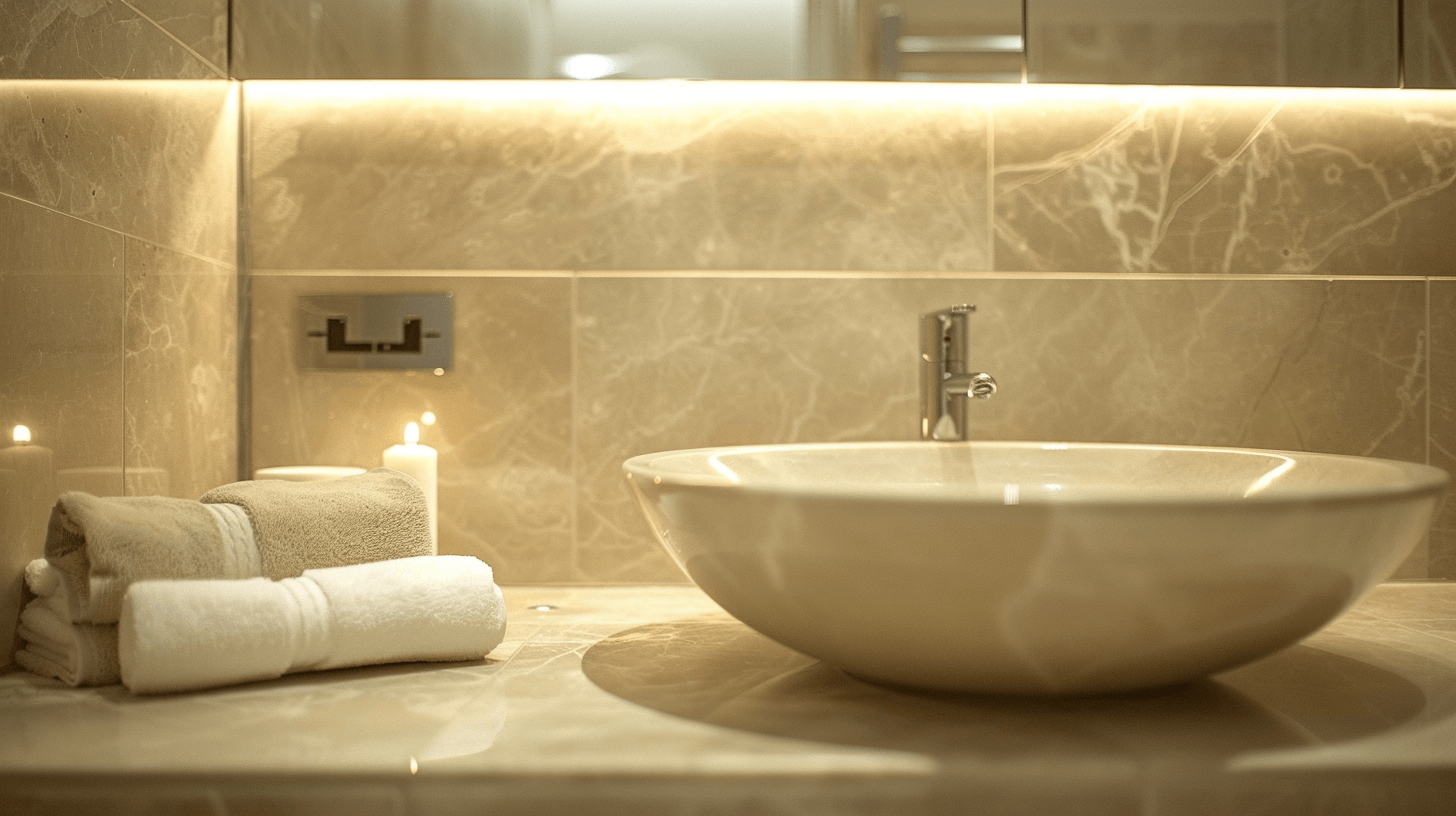
Porcelain tiles are renowned for their resilience and longevity, making them an ideal choice for bathrooms. Their low porosity renders them highly water-resistant, a critical feature in moisture-prone areas. Additionally, porcelain’s robust composition resists chipping and scratching, ensuring a pristine appearance over time.
Natural Stone Tiles: Enhancing Aesthetics with Authenticity
Natural stone tiles, such as marble and slate, offer a touch of elegance and an organic aesthetic that can transform a bathroom into a luxurious retreat. Each piece’s unique veining and texture contribute to a bespoke design, elevating the room’s overall style.
Maintenance Considerations Across Tile Materials
Different tile materials necessitate varying maintenance regimes. Porcelain tiles demand minimal upkeep, typically needing only regular cleaning. Natural stone, however, often requires sealing to prevent staining and may call for specialised cleaning products to maintain its natural beauty.
Impact of Material Choices on Budget
The selection of tile material directly influences the tiling budget. Porcelain tiles present a cost-effective solution due to their durability and ease of maintenance. In contrast, natural stone tiles carry a higher price point, reflecting their premium quality and the intricate installation they require. When planning your budget, consider not only the initial cost but also the long-term value and maintenance expenses associated with your chosen material.
Gloss vs. Matte Finishes: Reflecting Style and Practicality
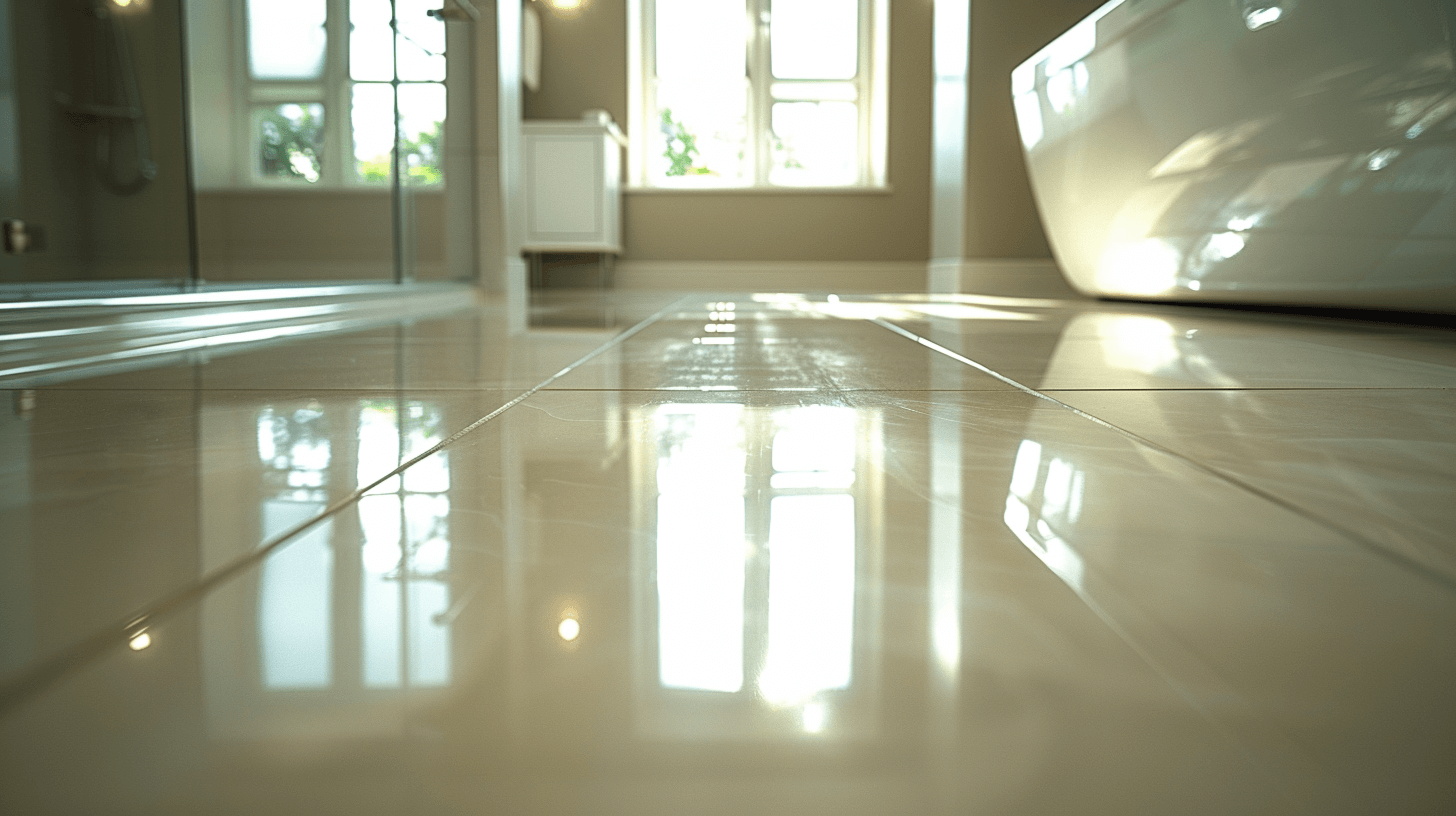
The selection between gloss and matte finishes can significantly alter the visual dynamics of your bathroom. Gloss tiles reflect light, enhancing brightness and creating a clean, expansive feel, which is particularly beneficial in smaller bathrooms. Conversely, matte finishes absorb light, offering a more subdued, contemporary look that conceals water marks and smudges, thus reducing cleaning frequency.
Textured Tiles: Merging Safety with Aesthetic Depth
Textured tiles provide a dual benefit of safety and style. Their uneven surface increases grip underfoot, which is essential in wet bathroom environments to prevent slips. Aesthetically, textured tiles add depth and character to a space, imparting a tactile quality that can complement various design themes.
Maintenance Ease: A Consideration for Finish Choices
When it comes to maintenance, certain finishes offer ease of cleaning. Gloss finishes, while showing water spots more readily, are typically easier to wipe clean due to their smooth surface. Matte and textured finishes may require more frequent cleaning to address grime in crevices but are more forgiving of everyday wear and tear.
Creating Spatial Illusions with Tile Finishes
In compact bathrooms, the right finish can create an illusion of space. Glossy tiles with their reflective properties can make a room appear larger and more open. Strategic placement of these tiles, particularly on walls, can amplify this effect, contributing to a more spacious ambiance.
Selecting a Harmonious Tile Colour Scheme
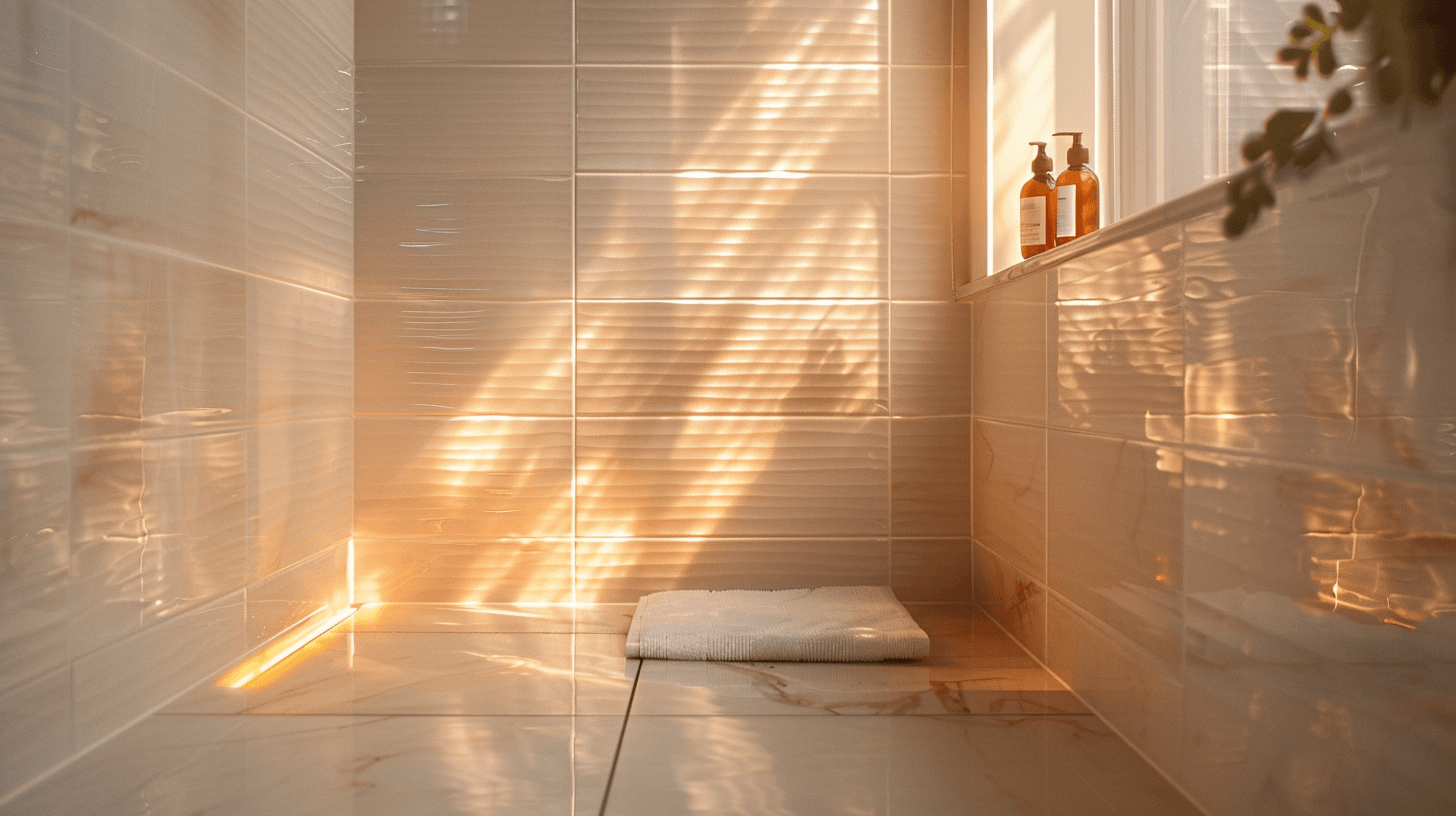
Choosing the right tile colour scheme is pivotal in creating a cohesive bathroom design. To ensure the tiles complement your bathroom’s existing features, consider the colour of fixtures and fittings. Neutral tones offer versatility, while bold hues can make a statement.
Impact of Tile Colours on Spatial Perception
The colour of your tiles can influence the perceived size of your bathroom. Lighter colours tend to make spaces appear larger and airier, while darker shades can add depth and warmth but may make a small room feel more confined.
Utilising Contrasting Colours for Visual Interest
Contrasting colours can be employed to craft a focal point in your bathroom. For instance, a dark-hued feature wall against lighter surrounding tiles draws the eye and adds a modern touch.
Embracing Current Trends in Tile Colours and Patterns
Staying abreast of current trends can inspire your tile colour and pattern choices. Contemporary trends lean towards natural stone looks, geometric patterns, and gradient colour transitions. When selecting a pattern, consider the scale in relation to your bathroom’s size to maintain proportion and harmony.
Prioritising Slip Resistance in Bathroom Tiles
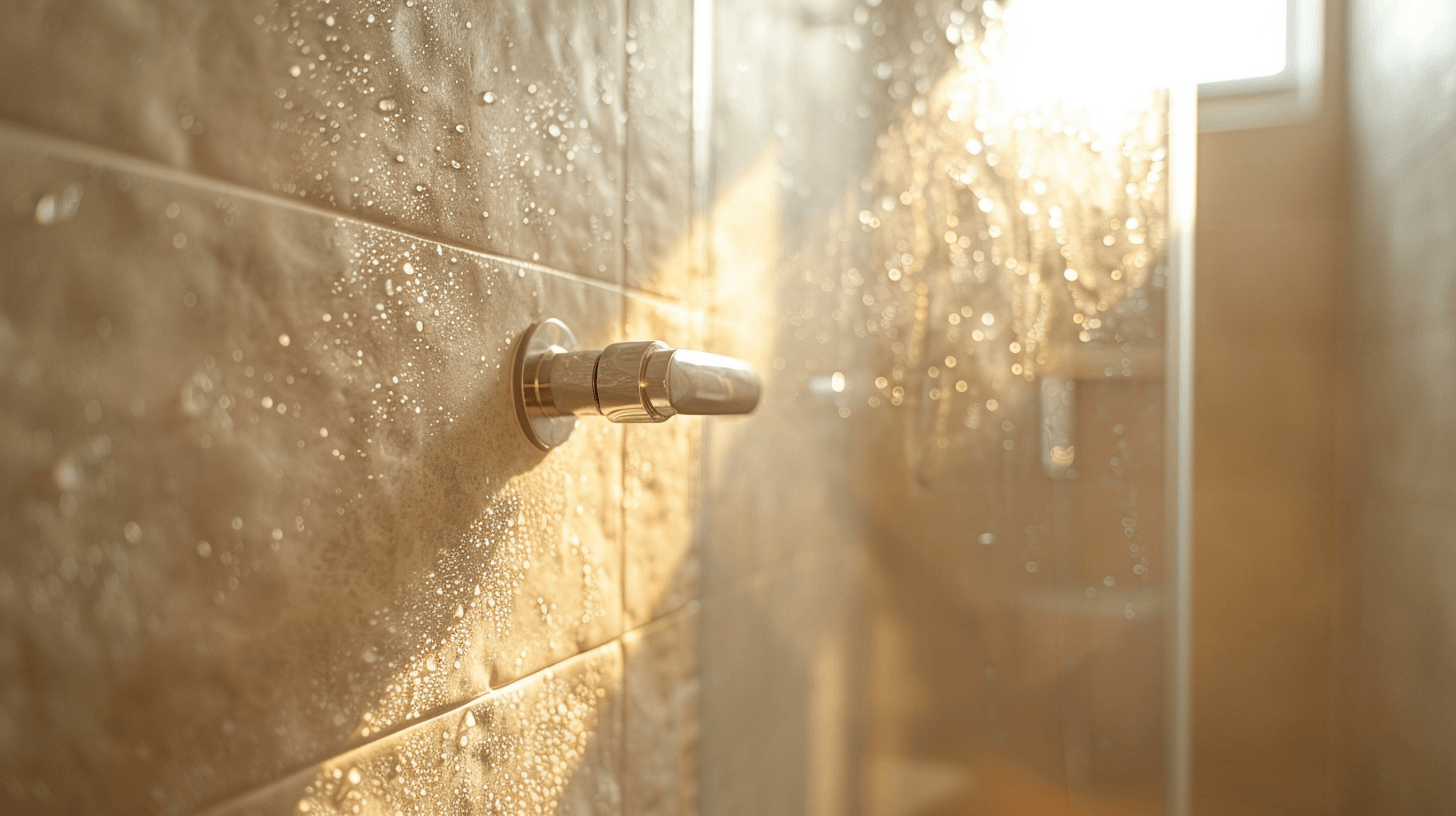
Slip resistance is a paramount safety feature for bathroom floor tiles. To mitigate the risk of falls, selecting tiles with a high coefficient of friction is advised. Look for tiles rated for bathroom use, often designated as anti-slip or having a textured surface to provide additional grip when wet.
Compatibility with Underfloor Heating Systems
Tiles with good thermal conductivity, such as porcelain or ceramic, are optimal for underfloor heating systems. These materials efficiently transfer heat, ensuring your bathroom remains comfortably warm. It is essential to verify that your chosen tiles are compatible with underfloor heating to avoid any potential damage from thermal expansion.
Water Absorption Rates and Their Impact
The water absorption rate of a tile determines its suitability for wet areas. Low absorption tiles, typically porcelain, are less likely to crack or grow mould due to moisture exposure. For showers and baths, selecting vitrified tiles with a water absorption rate of less than 0.5% will ensure durability and water resistance.
Best Practices for Tile Maintenance and Longevity
To ensure the longevity of bathroom tiles, regular maintenance is crucial. Seal natural stone tiles to prevent water damage, clean grout lines to avoid mould growth, and use pH-neutral cleaners to maintain tile integrity. Adhering to these practices will keep your bathroom tiles in pristine condition for years to come.
Crafting Feature Walls with Tile Accents
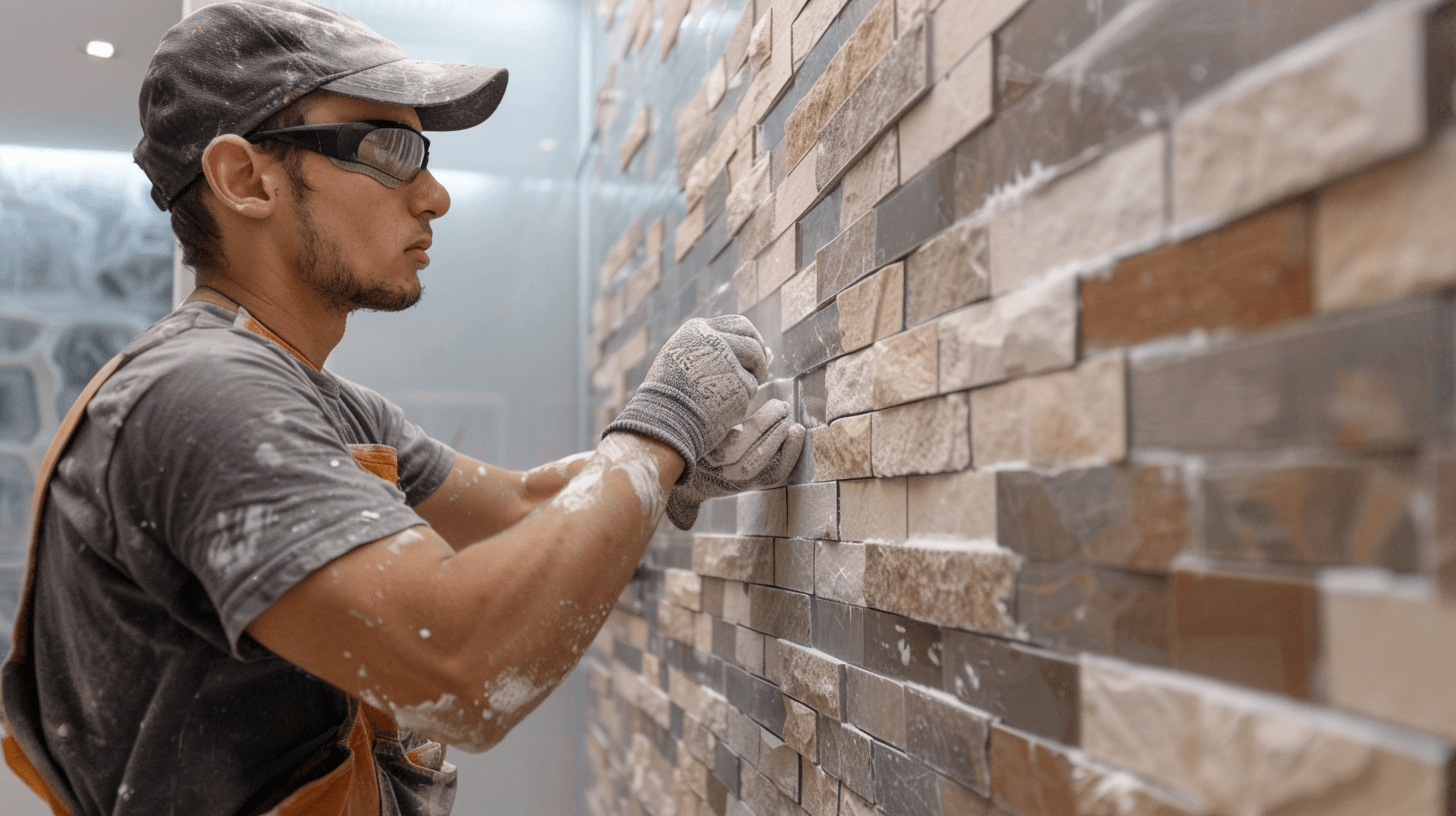
Tiles offer a versatile medium to create striking feature walls or decorative accents in your bathroom. By selecting tiles with distinctive patterns or bold colours, you can establish a focal point that draws the eye and adds depth to the room. Mosaic tiles, with their intricate designs, can be used to adorn a section of the wall or to frame bathroom fixtures, infusing artistry into the space.
Embracing the Latest Trends in Tile Textures
The current trends in bathroom tiles showcase a preference for tactile experiences. Textured tiles with raised patterns or 3D effects not only add visual interest but also enhance the sensory appeal of your bathroom. These contemporary designs range from subtle fabric-like textures to pronounced geometric patterns, catering to diverse aesthetic preferences.
Reflecting Personal Style through Custom Tile Designs
Personalization in tile design allows for a unique expression of style. Custom tiles can be commissioned to feature specific colours, patterns, or images that resonate with your personal taste. Deco tiles, with their custom embellishments and varied motifs, offer an opportunity to infuse individuality into your bathroom design.
Integrating Innovative Tile Technologies
Innovative tile technologies can elevate the functionality and hygiene of your bathroom. Anti-bacterial tiles, for instance, inhibit the growth of bacteria and mould, ensuring a cleaner environment. Self-cleaning tiles, which utilise nanotechnology to break down dirt and grime, reduce maintenance efforts while maintaining the bathroom’s aesthetic appeal.
Preparing for Tile Installation: Key Considerations
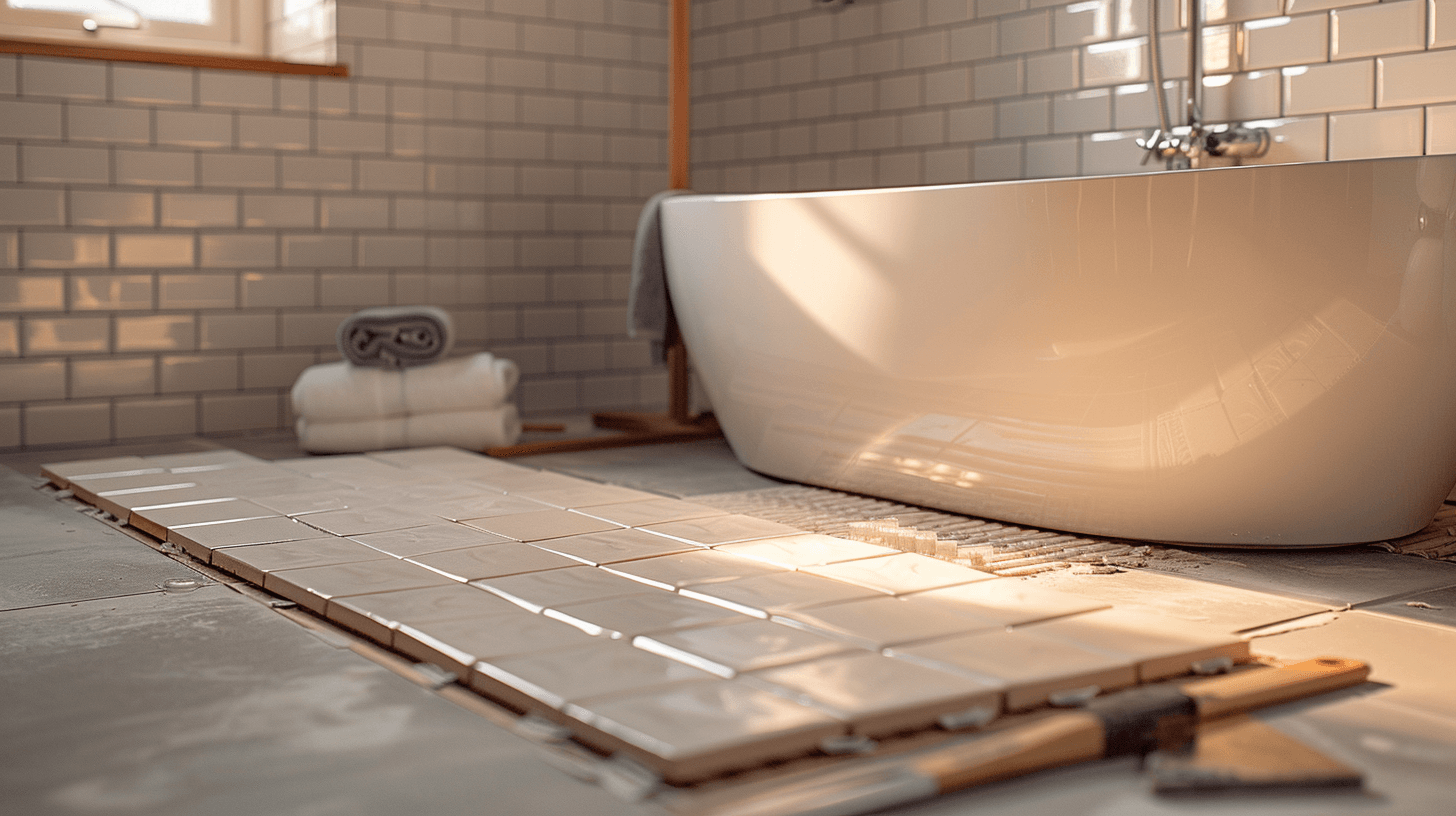
Before embarking on the installation of bathroom tiles, several preparatory steps are essential to ensure a successful outcome:
- Substrate Preparation: The surface onto which tiles will be laid must be clean, level, and firm. Any previous flooring should be removed, and the substrate should be checked for stability and repaired if necessary.
- Tools and Materials: Gather all necessary tools and materials beforehand, including tile cutters, trowels, spacers, adhesive, and grout. This ensures a smooth workflow without interruptions.
- Layout Planning: Dry lay tiles to plan the layout, accounting for cuts and spacing. This step is crucial to visualise the end result and make adjustments before the actual installation.
Deciding Between DIY and Professional Installation
The decision to instal tiles yourself or hire a professional depends on several factors:
- Skill Level: DIY installation can be cost-effective but requires a certain level of skill and confidence. Complex patterns or materials like natural stone may best be handled by professionals.
- Time Investment: DIY projects often take longer than professional installations. Consider your timeline and whether you can afford the extra time DIY might require.
- Quality Assurance: Professionals bring expertise that can ensure a high-quality finish, especially important in wet areas where improper installation can lead to water damage.
Addressing Common Tile Installation Challenges
Tile installation can present challenges that may impact the project:
- Cutting Precision: Cutting tiles to fit around fixtures or in corners requires precision. Mistakes can lead to wasted materials and an unprofessional finish.
- Adhesive and Grout Application: Evenly applying adhesive and grout is vital for a level surface and to prevent future problems like tile lifting or water ingress.
How “All Service 4U” Can Assist
“All Service 4U” offers expertise in overcoming common tiling challenges:
- Professional Assessment: Their team can assess your bathroom and provide recommendations for the best installation approach.
- Skilled Workmanship: With experienced tilers, “All Service 4U” ensures precise cuts, even adhesive application, and correct grout techniques for a durable and aesthetically pleasing result.
The Role of Grout in Tile Design
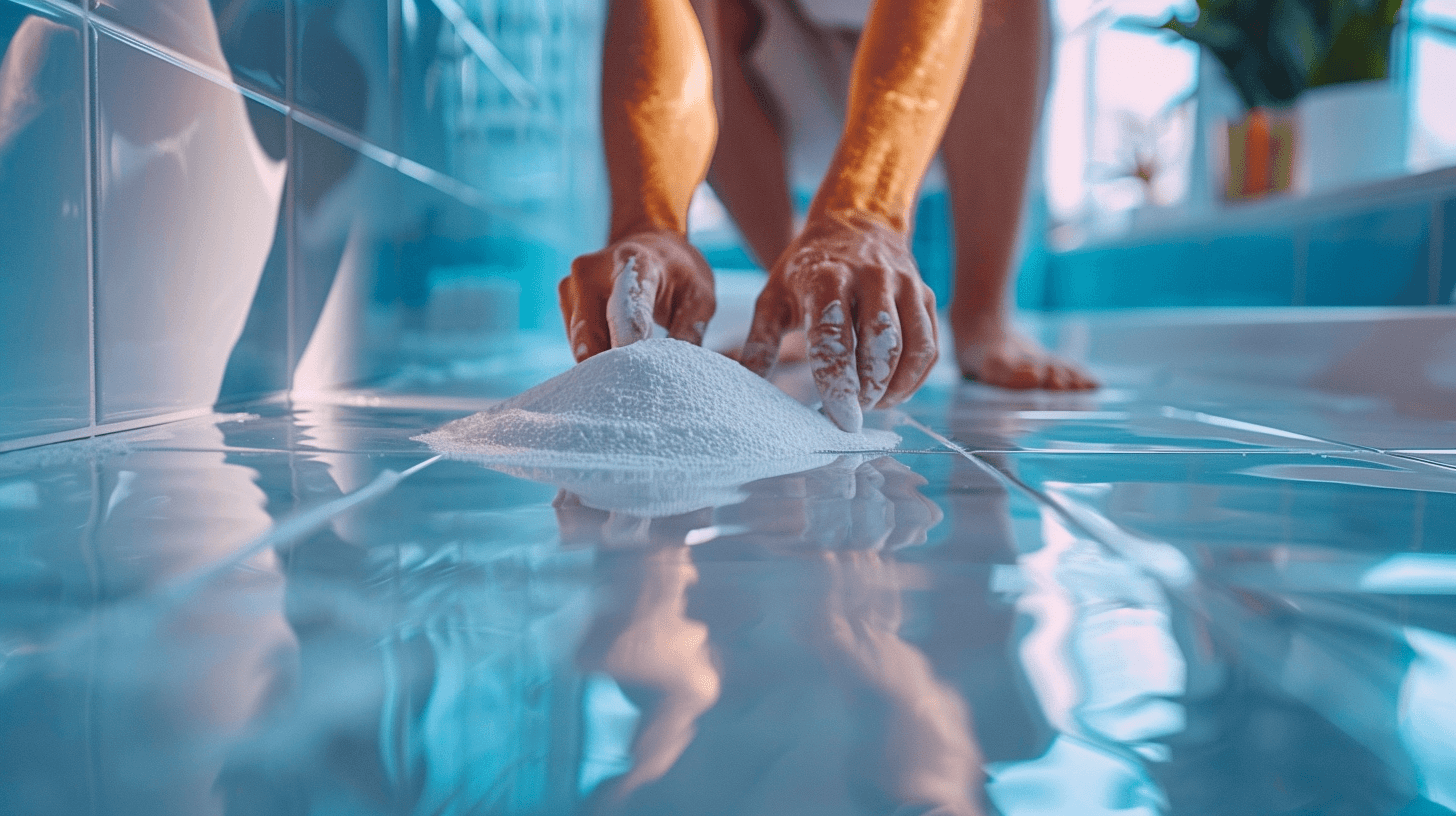
Grout plays a more significant role than merely filling the gaps between tiles; it influences the overall design and longevity of your bathroom’s tiled surfaces. The colour of grout you choose can either accentuate the individual tiles or blend seamlessly for a more uniform look.
Benefits of Mould-Resistant Grout
In the bathroom, where moisture is prevalent, selecting mould-resistant grout is beneficial for maintaining a clean and hygienic environment. This type of grout contains antimicrobial additives that inhibit mould and mildew growth, ensuring the joints remain pristine and reducing the need for frequent cleaning.
Techniques for Grout Application
Proper grout application is crucial for the durability of your tile work. Techniques such as ensuring even distribution and adequate curing time contribute to the longevity of the tiles, preventing water infiltration and subsequent damage.
Epoxy vs. Traditional Grout
When choosing between epoxy and traditional cement-based grout, consider the following:
- Epoxy Grout: Highly durable and resistant to stains and chemicals, epoxy grout is an excellent choice for high-traffic and wet areas. It does not require sealing and maintains its colour over time.
- Traditional Grout: Easier to work with and more cost-effective, traditional grout requires sealing to resist moisture and stains. It may need more frequent maintenance to preserve its appearance.
Eco-Friendly Tile Materials for Sustainable Bathrooms
When renovating your bathroom, selecting eco-friendly tile materials is a responsible choice that benefits both the environment and your home’s aesthetics. Manufacturers now offer a variety of sustainable tiles made from recycled materials, such as glass or ceramic, which provide the same quality and durability as traditional options.
Recycled Tile Options: Quality Meets Sustainability
Recycled tiles are crafted from pre- and post-consumer materials, reducing landfill waste and the demand for raw resources. These tiles come in numerous styles and finishes, ensuring that eco-conscious choices do not compromise on design. Cost-wise, they are competitive with conventional tiles, making them an accessible option for those looking to green their renovation.
Manufacturing Considerations for a Greener Footprint
The tile manufacturing process has evolved to reduce environmental impact. Sustainable practices include using recycled materials, implementing energy-efficient production methods, and minimising water usage. These advancements contribute to a lower carbon footprint and a more sustainable product lifecycle.
Contributing to Greener Bathroom Designs
Your choice of tiles can significantly contribute to a greener bathroom design. By opting for tiles with a high recycled content or those produced with sustainable methods, you’re supporting industry practices that prioritise environmental stewardship. Additionally, selecting durable tiles that require less frequent replacement can lead to a reduction in waste over time.
Effective Budgeting for Bathroom Tiling
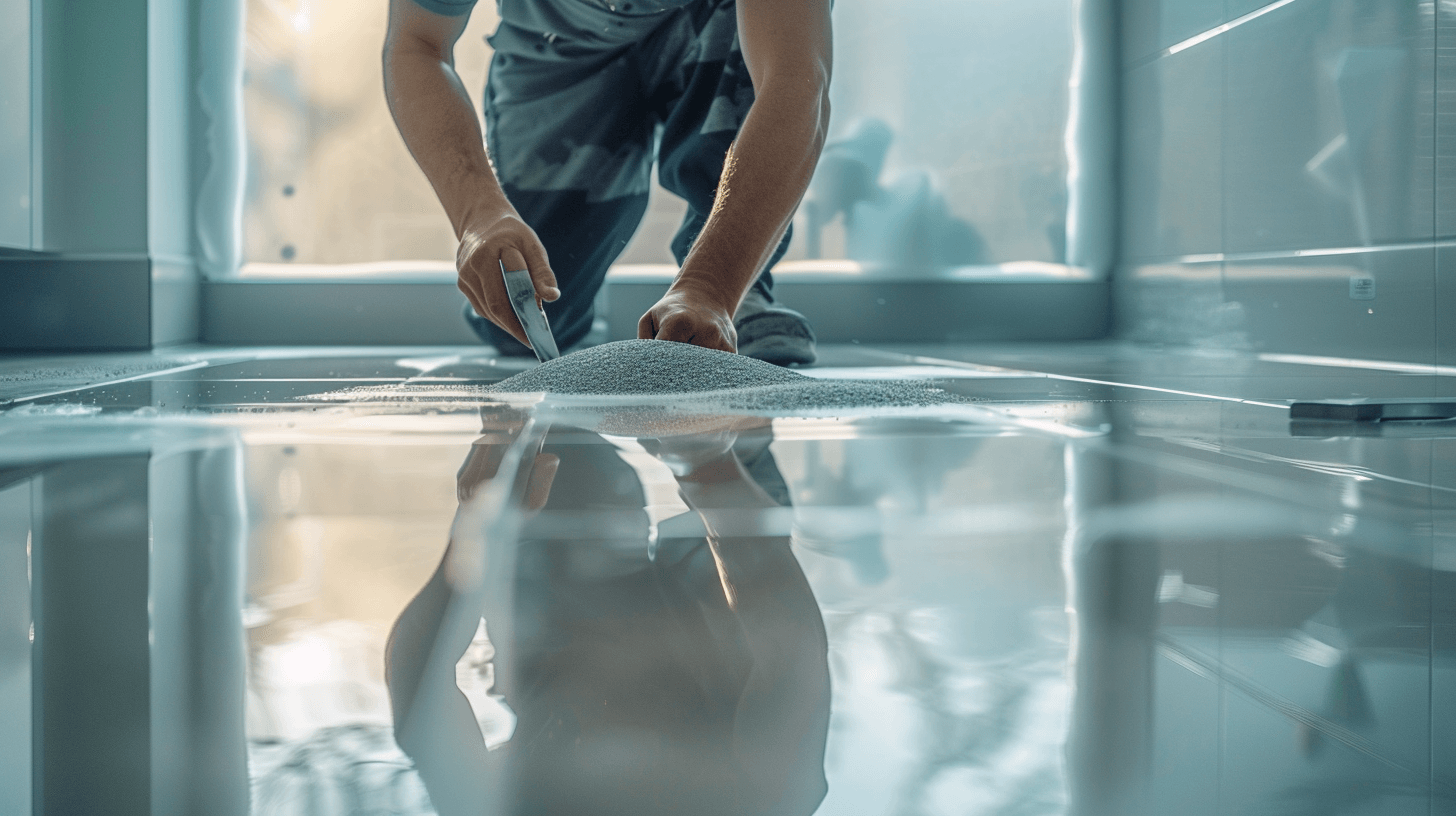
When planning your bathroom tiling project, establishing a budget is a critical first step. Consider the cost of both materials and labour, which can vary depending on the region and the complexity of the installation. Researching local pricing and requesting multiple quotes can provide a realistic cost framework.
Implementing Cost-Saving Strategies
To reduce expenses without sacrificing quality:
- Compare Prices: Shop around for the best deals on tiles and supplies.
- Consider Alternatives: High-quality ceramic tiles can mimic the look of more expensive materials like natural stone.
- Bulk Purchases: Buying tiles in bulk can often secure a discount, especially for larger projects.
Regional Variations in Material and Labour Costs
Material and labour costs can fluctuate based on geographic location. Urban areas may have higher rates due to increased demand and cost of living. It’s advisable to obtain quotes from several contractors to ensure competitive pricing.
Leveraging Trade Discounts
Inquire about trade discounts, which are often available to professionals but may also be extended to homeowners undertaking substantial projects. Some retailers offer discounts or loyalty programmes that can lead to significant savings over the course of a renovation.
Calculating Tile Quantity for Your Project
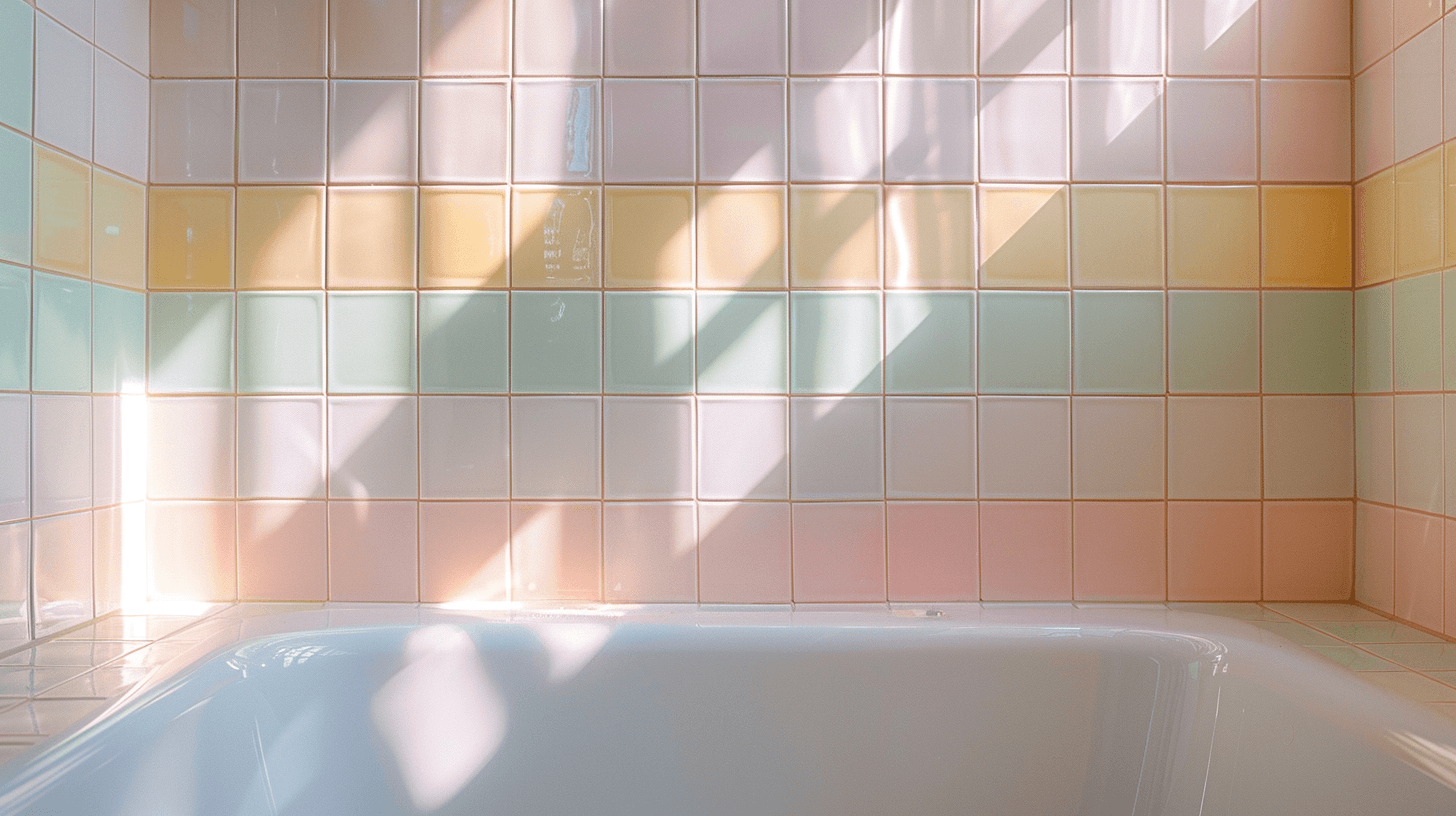
To determine the correct quantity of tiles needed for your bathroom:
- Measure Accurately: Calculate the area of the floors and walls to be tiled in square metres, ensuring to measure twice for accuracy.
- Account for Waste: Add an additional 10% to the total area to account for cuts, breakages, and future repairs.
- Consider Tile Size: Larger tiles may require more cuts and thus more waste, so adjust your calculations accordingly.
Addressing Uneven Surfaces and Irregular Spaces
For uneven surfaces or irregular spaces:
- Levelling: Use a self-levelling compound on the floor to create an even surface before tiling.
- Cutting Tiles: Measure and cut tiles to fit irregular spaces precisely, using a wet saw for complex cuts.
“All Service 4U” Solutions for Tiling Obstacles
“All Service 4U” can assist with unexpected tiling challenges by:
- Expert Assessment: Providing professional evaluations of the tiling surface and recommending appropriate preparatory measures.
- Specialised Equipment: Utilising the right tools to address specific issues, ensuring a high-quality finish.
Best Practices for Expansion Joints and Waterproofing
To manage expansion joints and waterproofing:
- Expansion Joints: Instal expansion joints at the periphery of the tiled area and where tiles meet different materials to allow for movement.
- Waterproofing: Apply a waterproof membrane before tiling in wet areas to prevent water damage and ensure the longevity of the installation.
Transformative Impact of Tile Selection on Bathrooms
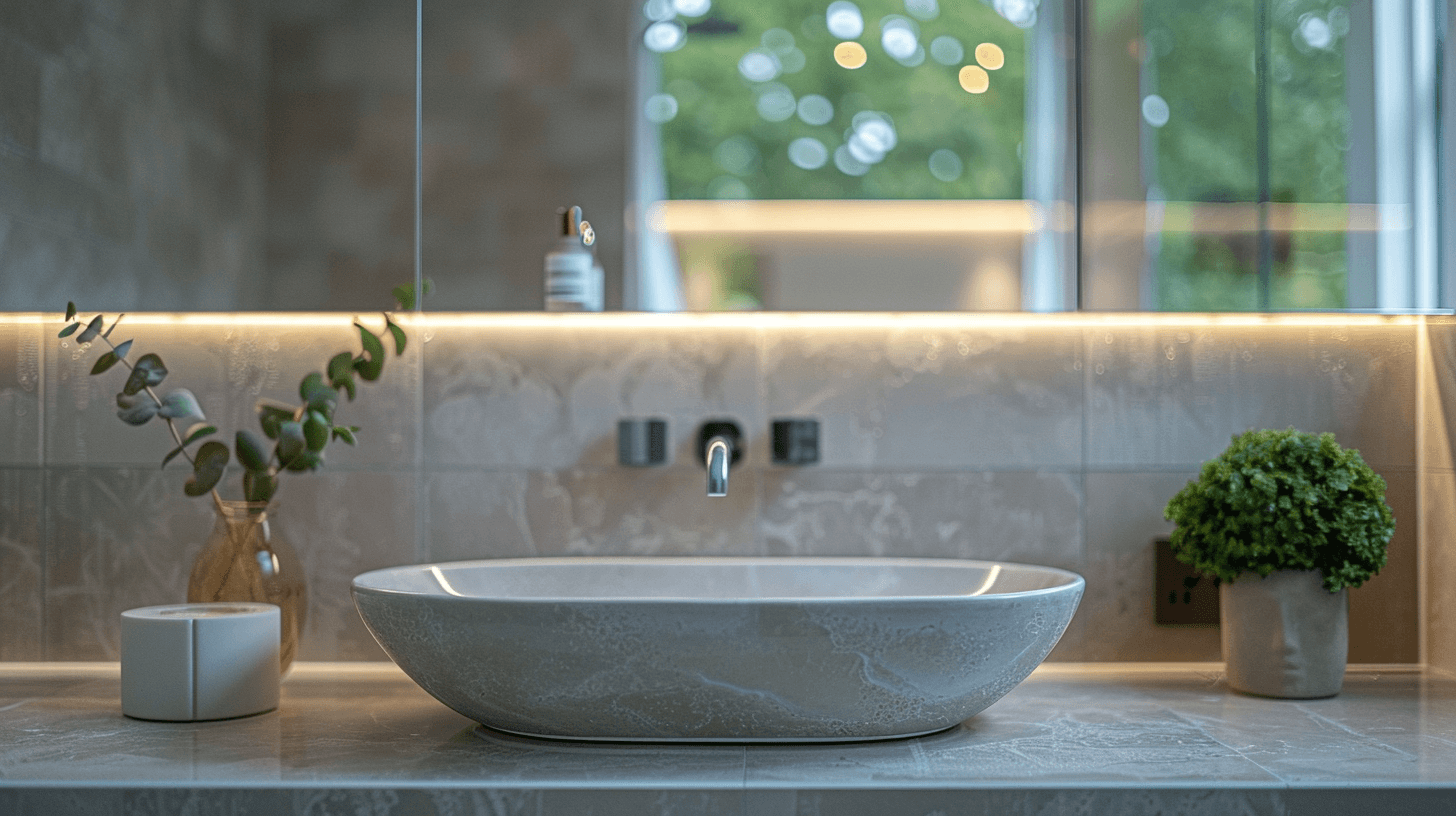
Selecting the right tiles can significantly enhance the bathroom experience, merging functionality with aesthetic appeal. Tiles not only protect walls and floors from moisture but also serve as a canvas for personal expression. The right choice can elevate a bathroom from a purely utilitarian space to a sanctuary of relaxation and style.
Ensuring Tile Selection Accuracy
Before finalising tile choices, it’s essential to:
- Verify Measurements: Double-check the dimensions of the space to ensure you purchase the correct quantity of tiles.
- Sample Review: Place tile samples in the bathroom to observe how they interact with the lighting and existing decor.
- Durability Check: Confirm the tiles’ suitability for wet conditions and their resistance to wear and tear.
Streamlining Tile Selection with “All Service 4U”
“All Service 4U” simplifies the tile selection and installation process by:
- Expert Consultation: Offering professional advice to match tiles with your requirements and style preferences.
- Installation Services: Providing skilled technicians to ensure tiles are installed to the highest standard.
Post-Installation Support from “All Service 4U”
Following installation, “All Service 4U” remains at your service, offering:
- Maintenance Advice: Guidance on how to care for your new tiles to maintain their appearance and longevity.
- Responsive Assistance: A dedicated team available to address any post-installation concerns or additional service needs.

